English Language > EXAM > CALT Alliance exam Questions and Answer,100% CORRECT (All)
CALT Alliance exam Questions and Answer,100% CORRECT
Document Content and Description Below
CALT Alliance exam Questions and Answer synthetic phonics - Correct Answerssound symbol correspondences - taking parts to the whole analytic - Correct Answersspelling - hear a whole word and seg... ment the word into phonemes - whole to parts phonological memory - Correct Answersholding information about words and sounds in memory phonological working memory - Correct Answersprocess of receiving, analyzing and processing sound elements in language Greek words - Correct Answerswords related to Olympics, theater, ology, silent p & ph, ch pronounced k Latin words - Correct Answerslong words - 3 or more syllables, double consonants, fancy words Anglo Saxon - Correct Answersshort words with silent letters, common words, receptive language - Correct Answersability to understand spoken or signed language - oral language development expressive language - Correct Answersability to produce language in any of a number of different modalities such as speech, sign or writing Language acquisition - Correct Answersoral receptive, oral expressive, written receptive, written expressive Oral language development includes - Correct Answersreceptive and expressive Components of language - Correct Answersform, content, use pragmatics - Correct Answersuse of language socially phonology - Correct Answerssound structure of language - begins at oral level phonetics - Correct Answersproduction of sounds andd the study of speech sounds orthography - Correct Answersunderstanding and recognizing patterns of written language (form) semantics - Correct Answersmeaning conveyed by language (content) morphology - Correct Answersstudy of the meaning - way words are formed and related to to one another phonological awareness - Correct Answersknowledge of and and sensitivity to the phonological structure of the words in a language phonemic awareness - Correct Answersawareness of the smallest units of speech and the ability to isolate or manipulate the individual phonemes in words alphabetic principle - Correct Answersconcept that the letters on a page represent the csounds in spoken words alphabetic language - Correct Answersa language such as English - letters are used systematicall to represent speech sounds or phonemes automaticity - Correct Answersability to respond or react without attention or conscious effect chameleon prefixes - Correct AnswersLatin origin - double letters near the beginning of a word (same meaning but different spelling) ad, con, dis ex, in, ob, sub metacognition - Correct Answersdeliberate rearrangement, regrouping or modal transfer of information Dr. Orton - Correct Answersstrephosymbolia, word deafness, father of dyslexia, dyslexia - Correct Answersspecific learning disability identify dyslexia - Correct Answersrti, early screeners Norm referenced tests - Correct Answersscores that permit comparison among people, standardized criterion referenced tests - Correct AnswersSTAAR, descriptions of one child's knowledge within the domains of knowledge represented in the test, may be standardized or informal curriculum referenced tests - Correct Answersquestions taken from curriculum, standardized or or informal - child's previous performance is the standard for judging progress validity - Correct Answersscores measure the construct they are purported to measure reliability - Correct Answersconsistency with which scores mear a trait or construct reading words in isolation test - Correct AnswersWJ, TOWRE word decoding test - Correct AnswersWIAT, WJ, phonological awareness test - Correct Answersctopp letter knowledge test - Correct Answerspat, wist rapid naming test - Correct Answersctopp, wjIII fluency test - Correct Answersgort, wj, towre, reading comprehension test - Correct Answerswiat, wjiii, fort, gray silent reading test spelling test - Correct Answerstest of written spelling, wj, wiat, listening comprehension test - Correct Answersowls, wiat, wj` multisensory teaching - Correct AnswersVisual, auditory, kinesthetic, tactile instruction multisensory, structured language approach - Correct AnswersVAKT, systematic and cumlative, direct instruction, diagnostic teaching, synthetic and analytic, comprehensive and inclusive whole language - Correct Answersken goodman and frank smith Isabelle Liberman - Correct Answersweakness with the language system in the brain itself Keith stanovich - Correct Answersphonological processing, - matthew effect - students with phonemic awareness in place become richer better readers Torgesen, Lundbert, and Foorman - Correct Answersphonological awareness is a critical factor in dyslexia martha denckla and rita rudel - Correct Answerstrouble with rapid naming Maryanne Wolf and Patricia Bowers - Correct Answersdouble deficit - phonological processing and rapid naming Shaywitz - Correct AnswersConnecticut Longitudinal Study Reid Lyon - Correct AnswersNICHD - Chief of the Child Development and Behavior Branch - National reading panel Chall - Correct AnswersStages of reading development Federal Rehabilitation Act of 1973 - Correct Answers504 - Not federally funded - civil rights Individuals with Disabilities Act (IDEA) - Correct Answersspecial ed law - federally funded etymology - Correct Answersorigin of words synthetic phonics - Correct Answerstransform letters into sounds and then blend explicit and systematic ways to teach spelling - Correct Answersteach letter sound relationship, then blending, and continue to reinforce the basic principles syllable division, mnemonics, spelling deriviatives - Correct Answersprefix first Hinshelwood - Correct Answersword blindness Dr OWEN - Correct Answers1987 Drive to Congress to study learning disabilities Comprehension Monitoring - Correct Answersactive awareness of whether one is understanding or remembering text Cooperative learning - Correct Answersinvolvement in clearly defined activities in which they work together to achieve their individual goals Collaborative Strategic Reading - Correct Answersdiscuss material, help each other understand it, encourage each other, learn collaborative skills, learn comprehension strategies language acquisition - Correct AnswersMoats - parallel talk, self talk, and expansion. shared storytime, [Show More]
Last updated: 1 year ago
Preview 1 out of 5 pages
Instant download

Buy this document to get the full access instantly
Instant Download Access after purchase
Add to cartInstant download
Reviews( 0 )
Document information
Connected school, study & course
About the document
Uploaded On
Feb 10, 2023
Number of pages
5
Written in
Additional information
This document has been written for:
Uploaded
Feb 10, 2023
Downloads
0
Views
72













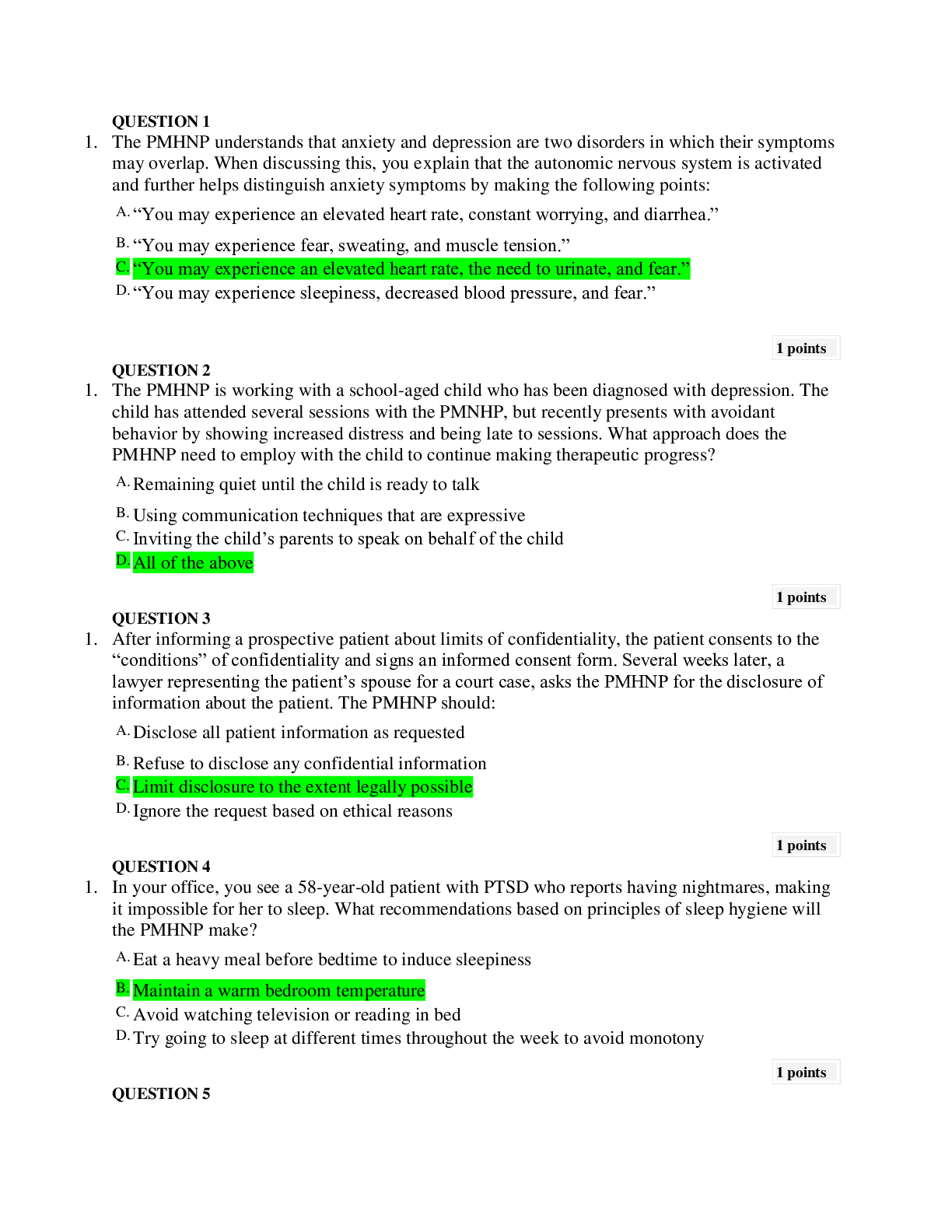
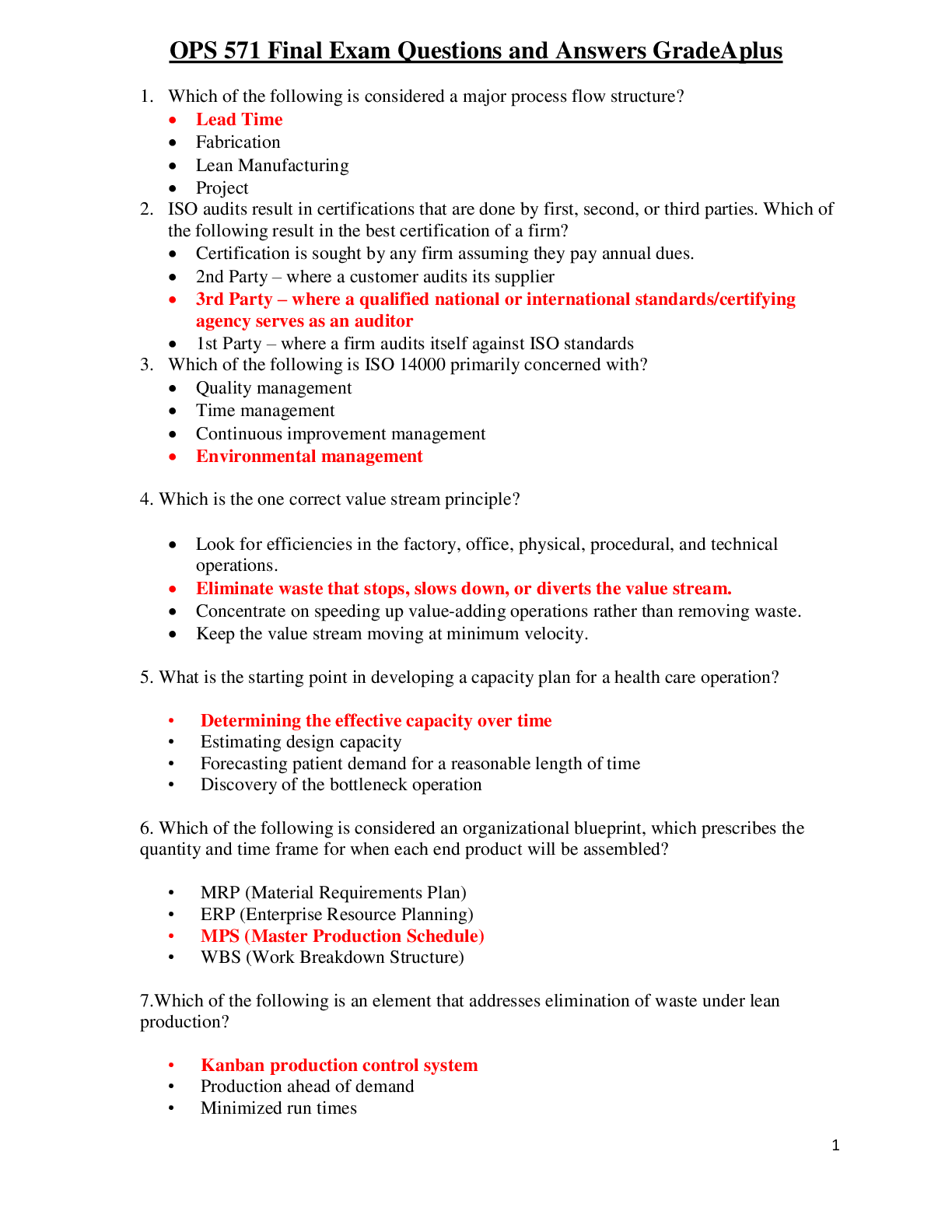
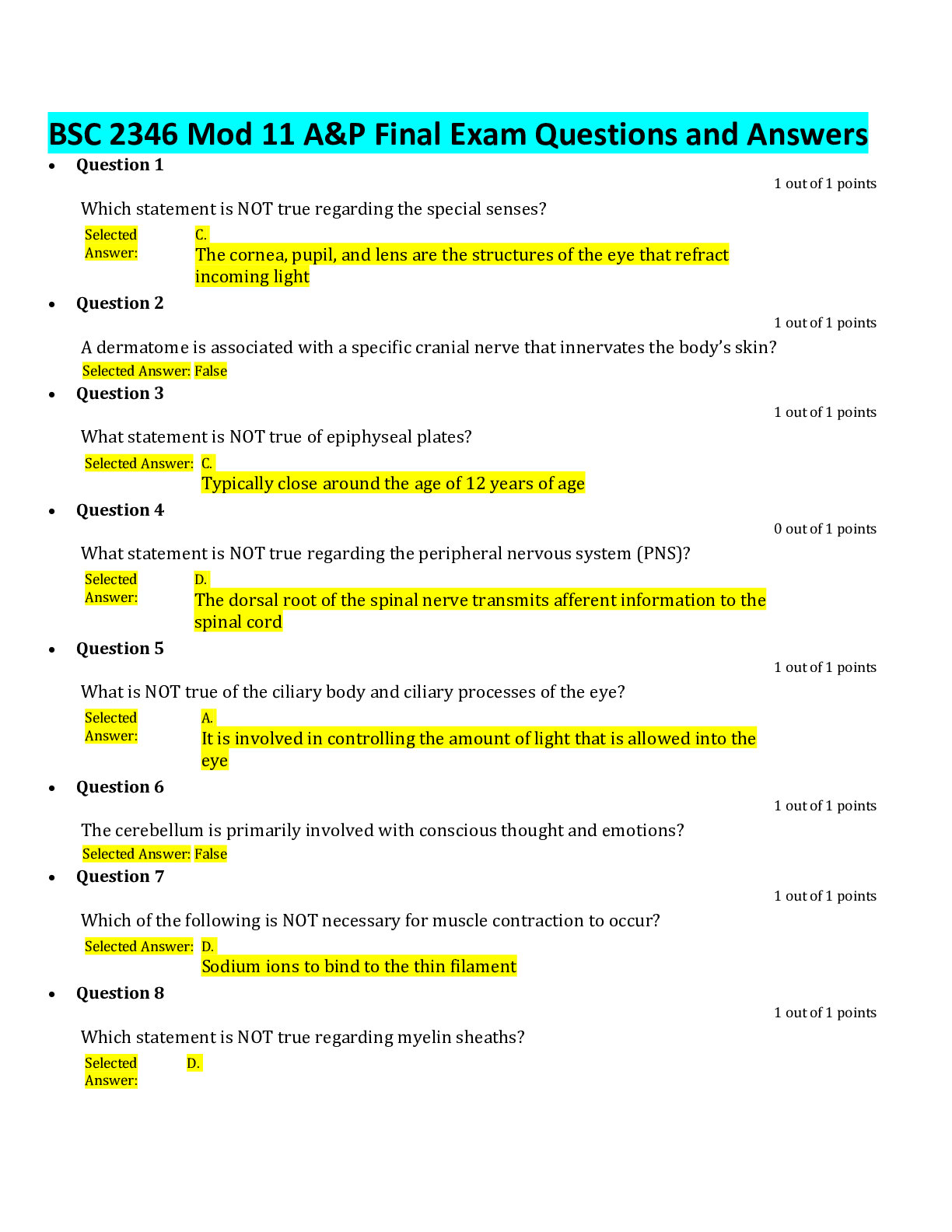


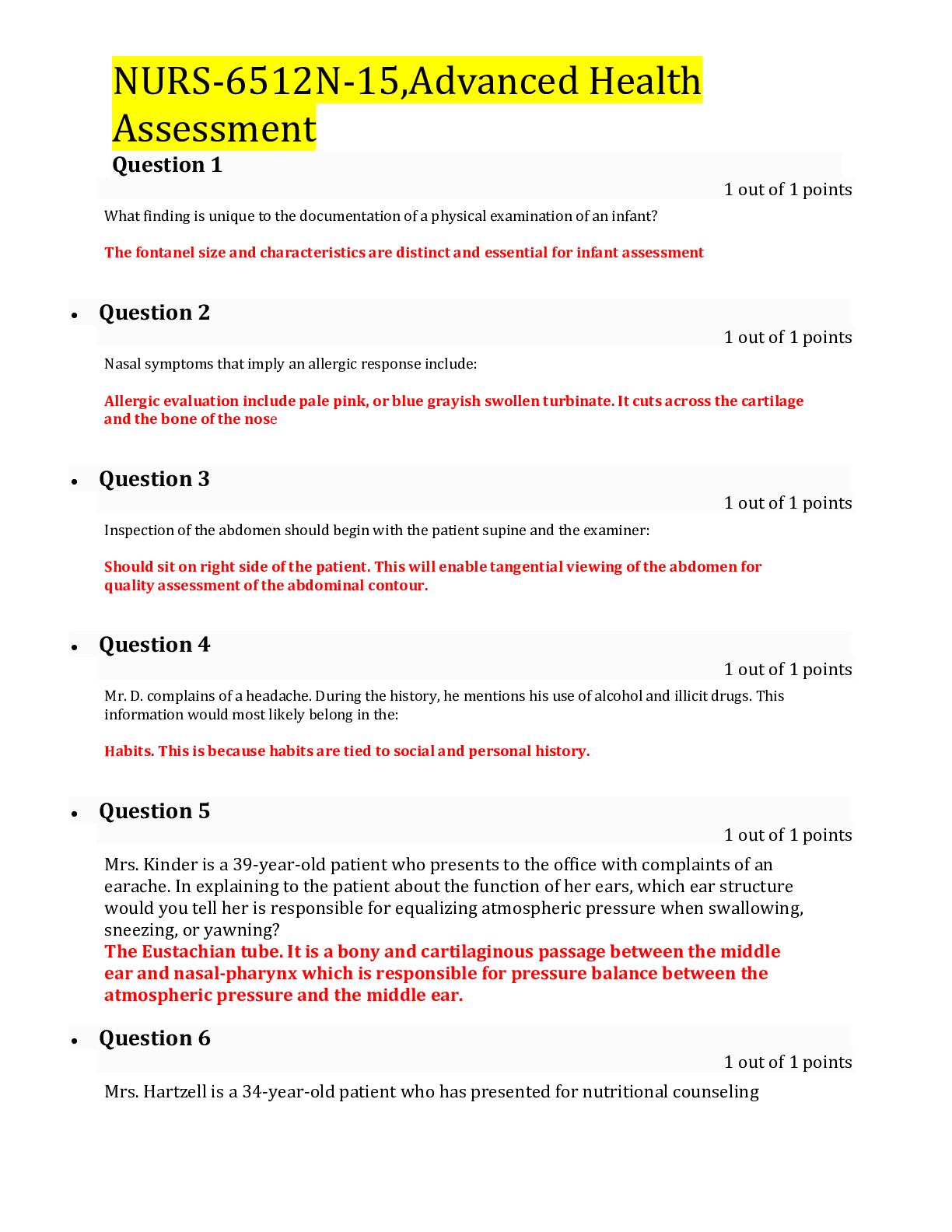
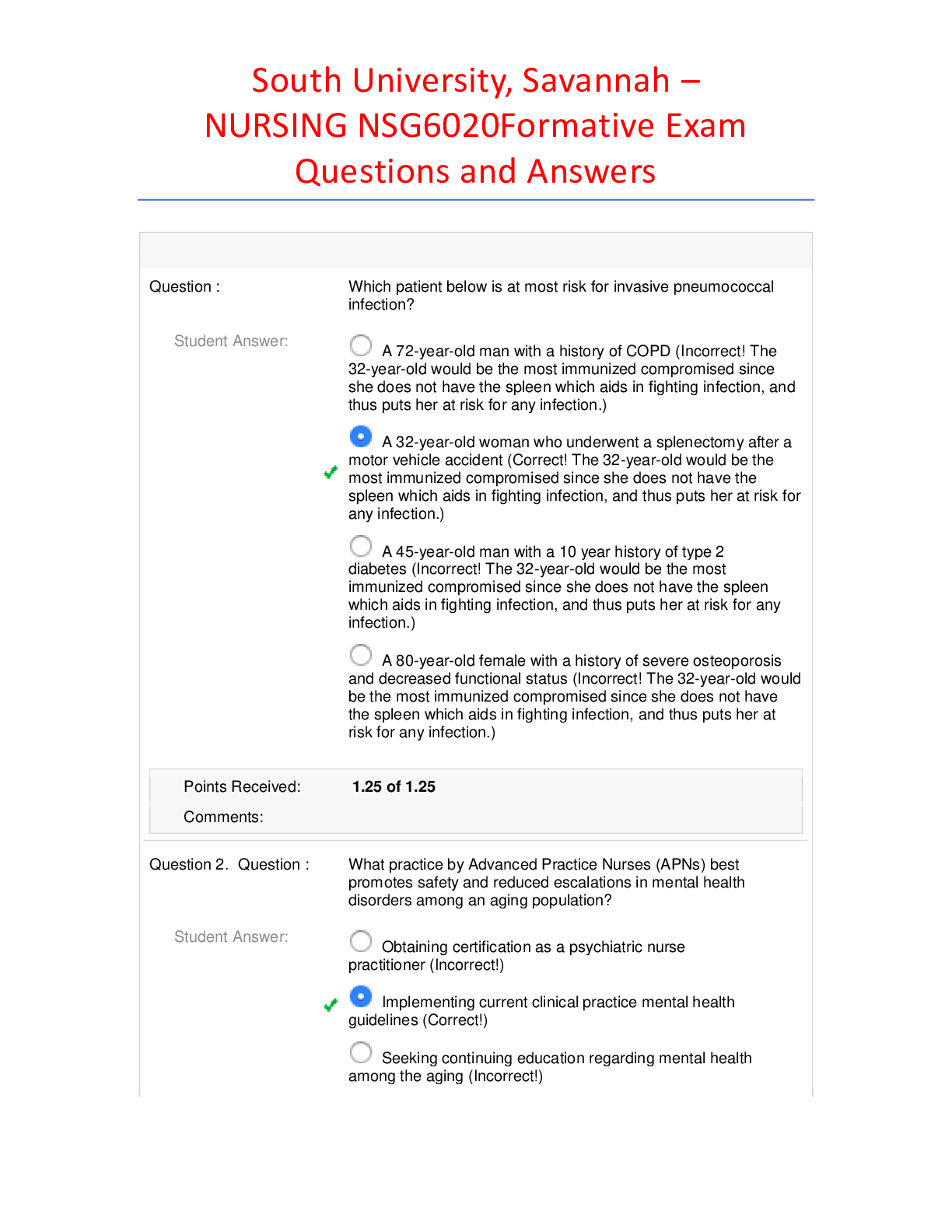
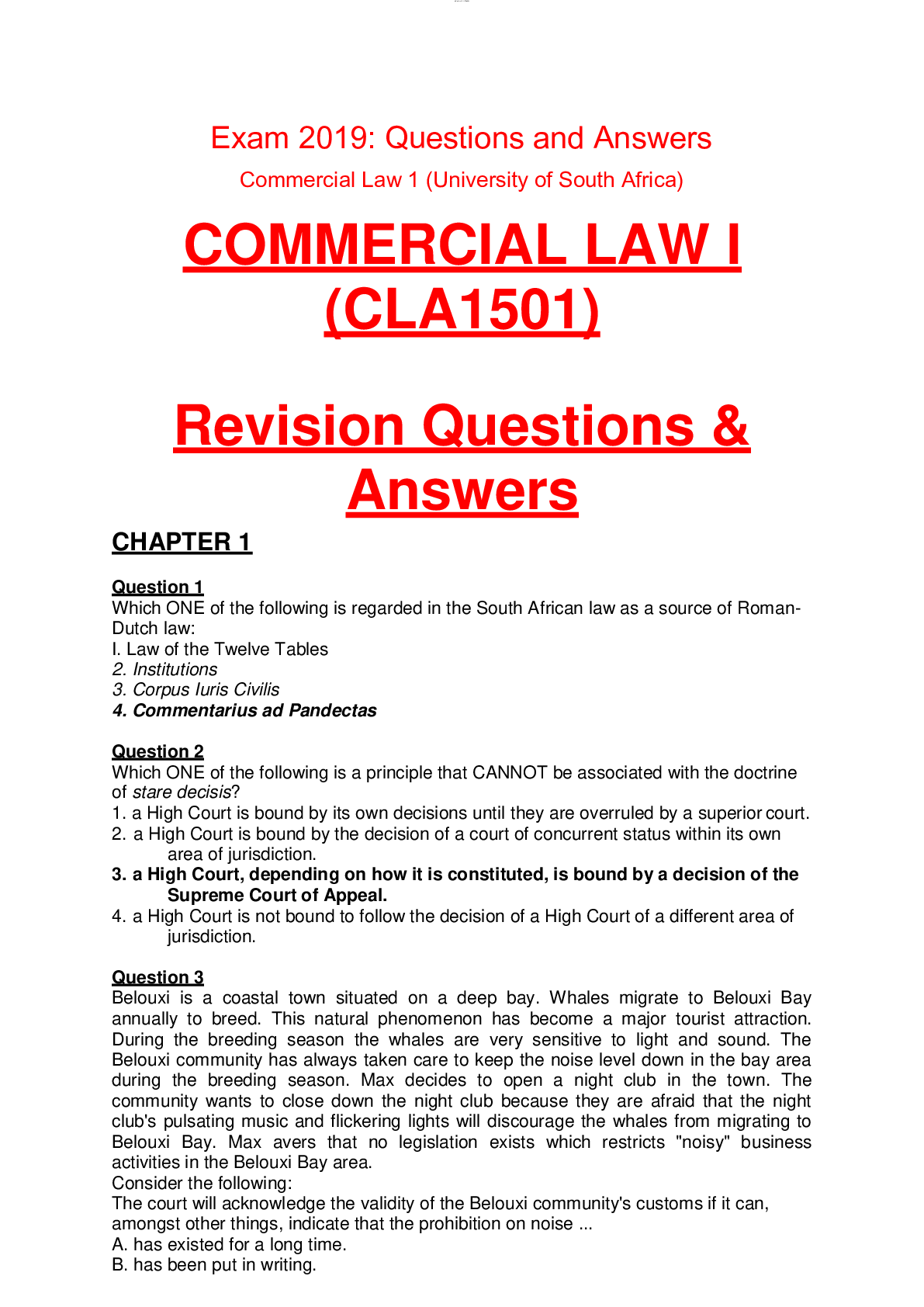

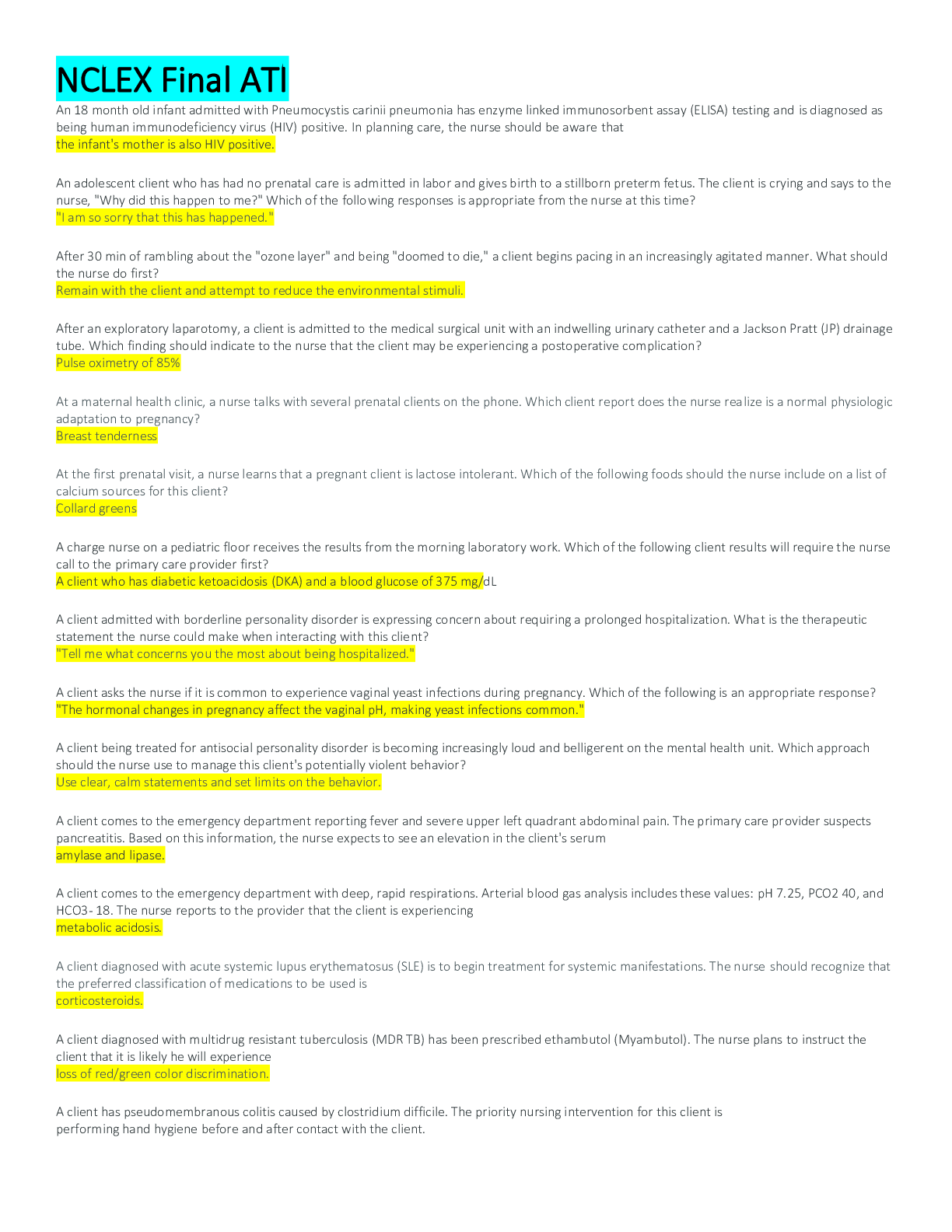
.png)


